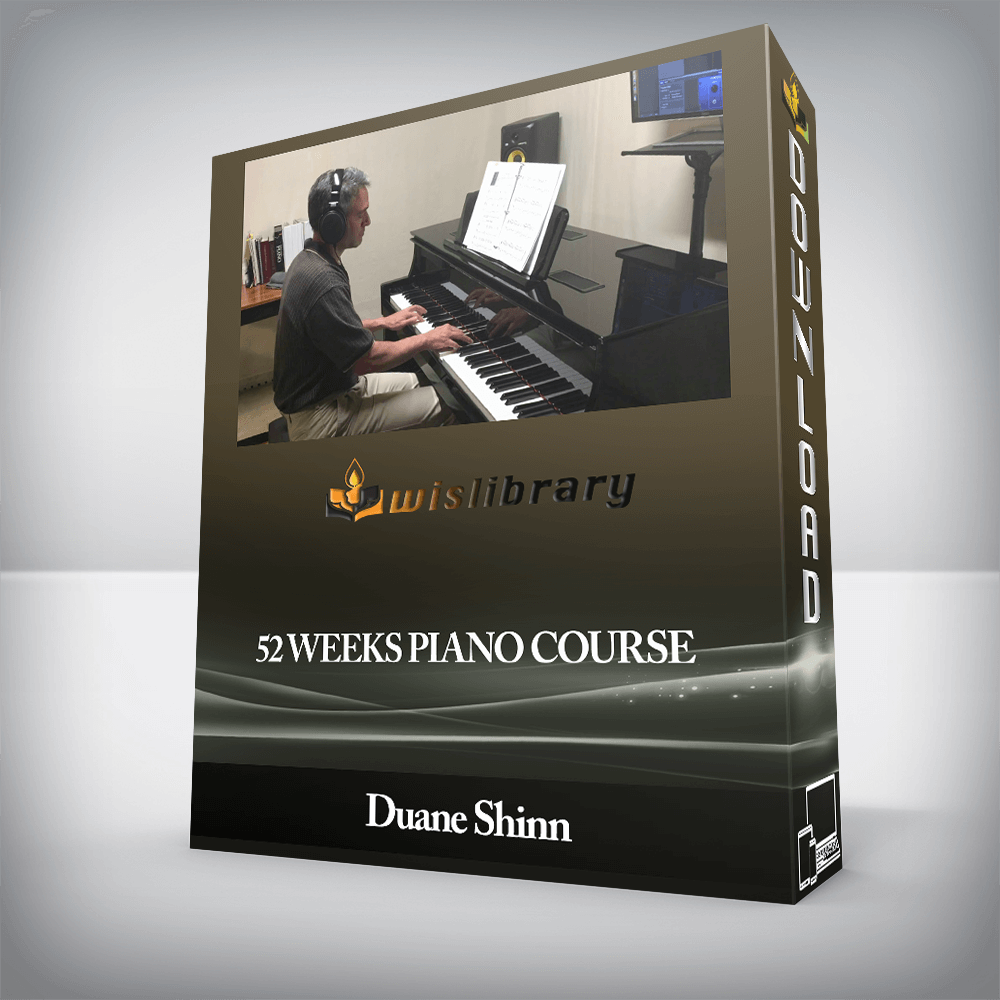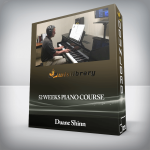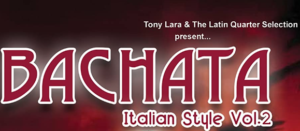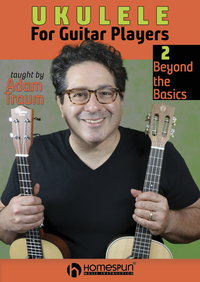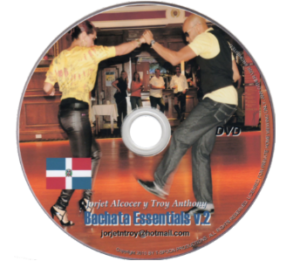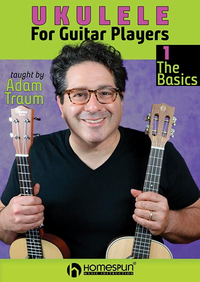Duane Shinn – 52 WEEKS PIANO COURSEThe 52-Week Home Study “Crash Course in Exciting Piano Playingâ€: The Secret “Backdoor†To Sounding Great!…The 52-Week Home Study “Crash Course in Exciting Piano Playingâ€: The Secret “Backdoor†To Sounding Great!In computing the term backdoor refers to a method of bypassing normal authentication (identity checking). In terms of learning how to play the piano, the backdoor method is similar in that it bypasses the “normal†way of doing things. But it is a means to the same end and your identity as a piano player will still be as valid as if you had travelled the more traditional route! Good morning. This is Duane and today I would like to talk about The 52-Week Home Study “Crash Course in Exciting Piano Playingâ€: The Secret “Backdoor†To Sounding Great!Most people beginning to learn the piano will take piano lessons. This will normally be as a child, although adult piano lessons are becoming increasingly common. The format and content of piano lessons vary enormously, but they will generally start with teaching which key on the piano represents which note and then helping the learner understand the association between these physical keys and the notes on sheet music. The learner will usually learn to play from music and will be able to play increasingly complex pieces of music as their proficiency grows at reading music and associating the printed notes with the physical keys on the piano – and learning the most appropriate fingering shapes and patterns to play those notes effectively.This is a perfectly effective and time-tested way of learning to play the piano and has produced many thousands of wonderful pianists. However, it is not for the faint-hearted as many hours of practice are needed for significant progress to be made. Many would-be pianists lose heart and give up long before achieving their goal of being able to play the piano for pleasure.This is where the backdoor method can help! With this exciting new method a beginner will learn to play the piano using chords rather than sheet music. This enables significant progress to be made more quickly which encourages the learner to keep going! Once a student has a strong grasp of chords they will be able quickly to understand and learn how to read sheet music and associate that with the physical keys on the piano.To explain the theory in a little more detail it is important to understand what a chord is. A standard piano contains 88 keys arranged in sets known as octaves. An octave consists of 8 white keys – C, D, E, F, G, A, B, C. There are 7 1/2 octaves on a standard piano. In addition to the white keys there are black keys. Between C and D there is a key known as either C# (sharp) or Db (flat), between D and E there is D#/Eb, between F and G – F#/Gb, between G and A – G#/Ab and between A and B – A#/Bb. This set of 12 notes forms what is known as the chromatic scale which means that there is a musical interval of exactly one semitone between each of these notes.There are various different scales in music. They are differentiated by the intervals between each note in the scale. Most western music is written in what is called the “diatonic†scale, consisting of 8 notes and 7 different intervals. These scales are also referred to as “heptatonic†which means that they contain 7 different notes, and an 8th note (“octaveâ€) which is the same as the the starting note. For example you could start to play at one C and then through 7 more notes up to the next C ie D – E – F – G – A – B – C. The diatonic scale may also be major or minor. The example we have just looked at is a major scale which has the following intervals between notes:C – (1 tone) – D – (1 tone) – E – (1 semitone) – F – (1 tone) – G – (1 tone) – A – (1 tone) – B – (1 semitone) – CSo a major diatonic scale has an interval pattern of tone-tone-semitone-tone-tone-tone-semitone – which can also be represented as T-T-S-T-T-T-S: where S means semitone; T means tone.There are different types of minor scale but the most common is harmonic minor which differs from the major scale in that it reverses the tone/semitone intervals either side of the third and sixth notes. It therefore has the following intervals between notes:C – (1 tone) – D – (1 semitone) – Eb – (1 tone) – F – (1 tone) – G – (1 semitone) – Ab – (1 tone) – B – (1 semitone) – Cwhich could also be represented as T-S-T-T-S-T-S.It is important to understand something about scales as every piece of music is written in a “key†which refers to the predominant scale used in that piece of music. The major scale key of C that we looked at above only contains notes represented by white keys whereas all other keys includes at least one black note. Black notes are essential to preserve the correct interval between the notes in the scale.If you are learning to play the piano from music you may find that you concentrate on the notes of that music without a full awareness of the scale that the music is written in. However, if you are learning by the backdoor method, scales are critical to your understanding because a scale can be further broken down into a chord.There are many variations of chords but the most commonly used chords are those that contain the 1st (or “rootâ€), 3rd, 5th, and top note (octave) of the scale. The root note refers to the key that the chord is in. So, a C chord would contain C-E-G-C. It is not even necessary to include the top note as it simply duplicates the bottom (root) note an octave higher up- so a simple C chord could be just three notes C-E-G. In music, three notes are known as a triad.Different parts of a piece of music will be based largely on different chords, usually relating to notes within the scale of the original key. For example, a piece of music written in the key of C major could use a chord starting on any note within the scale of C. So you could work up the C scale forming a triad starting on each note of the scale and using the major 3rd and 5th notes above it. However, each time this necessitates the use of a note that is not also in the scale of C then that note in the chord is changed to fit back within the notes in the scale of C. This forms a different type of chord. Where all the notes in a chord are in the scale of C major, that is a major chord. If one note in a chord has to be flattened the chord then becomes a minor chord; if two notes have to be flattened it becomes a diminished chord.For the key of C major would use the following chords (consisting of the notes in brackets):C major (C – E – G)D minor (D – F – A)E minor (E – G – B)F major (F – A – C)G major (G – B – D)A minor (A – C – E)B diminished (B – D – F)Once you understand how chords work, it is relatively straightforward to play the outline of a piece of music just from the chord. Rather than focusing exclusively on written sheet music, it should be possible to take a set of lyrics and chords for a song of your choice (guitar tabs are often laid out this way) and start to make some progress. As you do this, your confidence will grow and you will then feel able to start adding some melody to fill out the song in more depth.I can speak about this from personal experience. I took piano lessons as a child and learned to play well from music, but there was never any spontaneity about my playing – I could not play something unless I had learned and practiced it. Unfortunately in so doing, I often lost the joy of playing for playing’s sake and it became more a case of a goal to be achieved. It was not until many years later, when I started playing for a church and realized that for many styles of song you simply do not need to play every note that is written on the sheet music. It was whilst looking at the guitar tabs for such songs and seeing the chords printed there that light suddenly dawned and I learned to enjoy playing a song from the chords in it and embellishing it as I went along with additional chord progressions, melodies and harmonies. It put the pleasure back in my playing and I have never looked back!So if you are interested in piano playing and want to learn how to play the piano, look no further than the backdoor method and within a short space of time you will be making real progress and enjoying every minute!There are no reviews yet.Add a Review Cancel replyYou must be logged in to post a review.
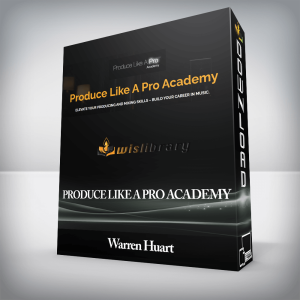 Warren Huart – Produce Like A Pro Academy
₹3,154.00
Warren Huart – Produce Like A Pro Academy
₹3,154.00
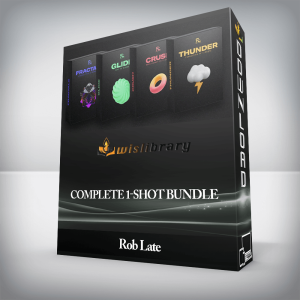 Rob Late – Complete 1-Shot Bundle
₹13,944.00
Rob Late – Complete 1-Shot Bundle
₹13,944.00
Duane Shinn – 52 WEEKS PIANO COURSE
₹21,414.00

